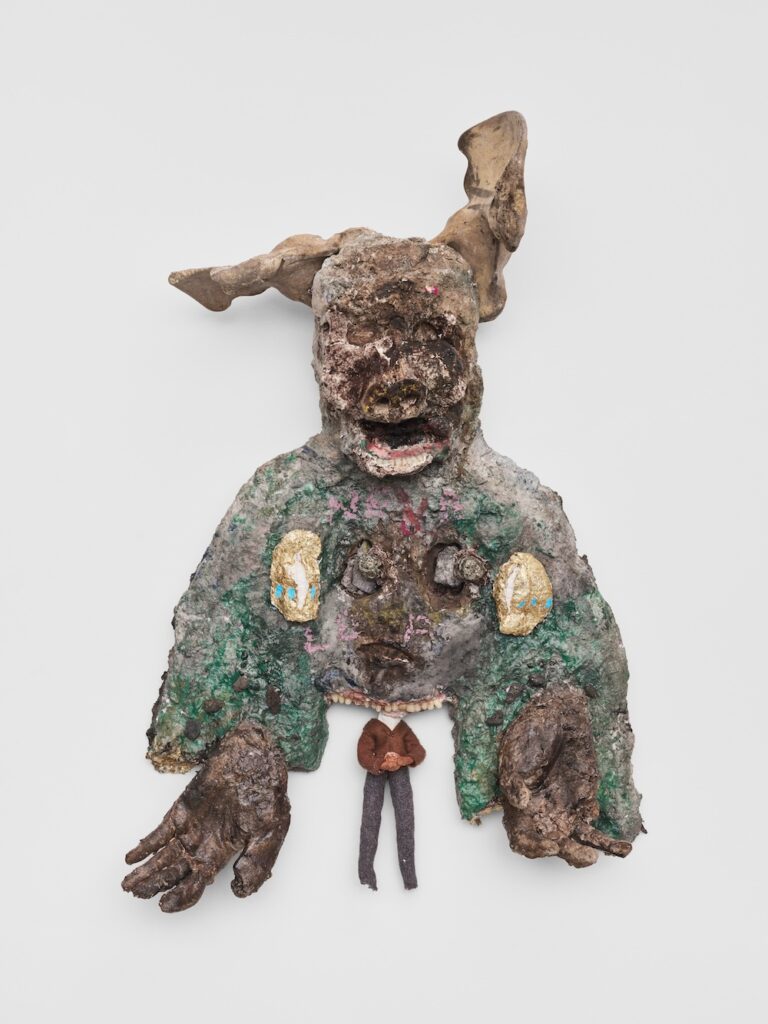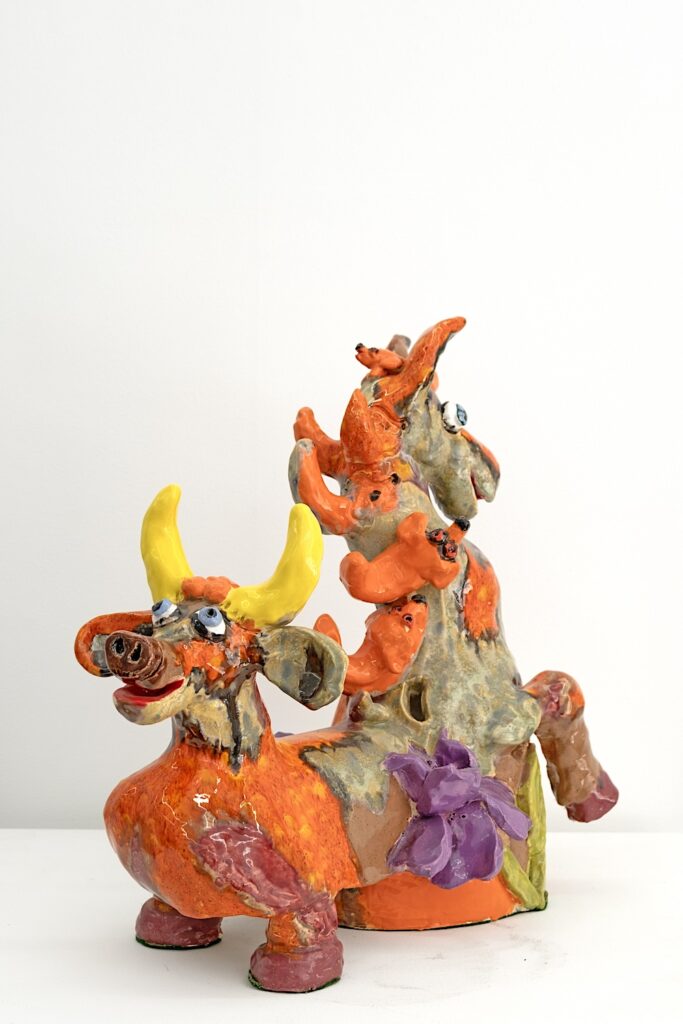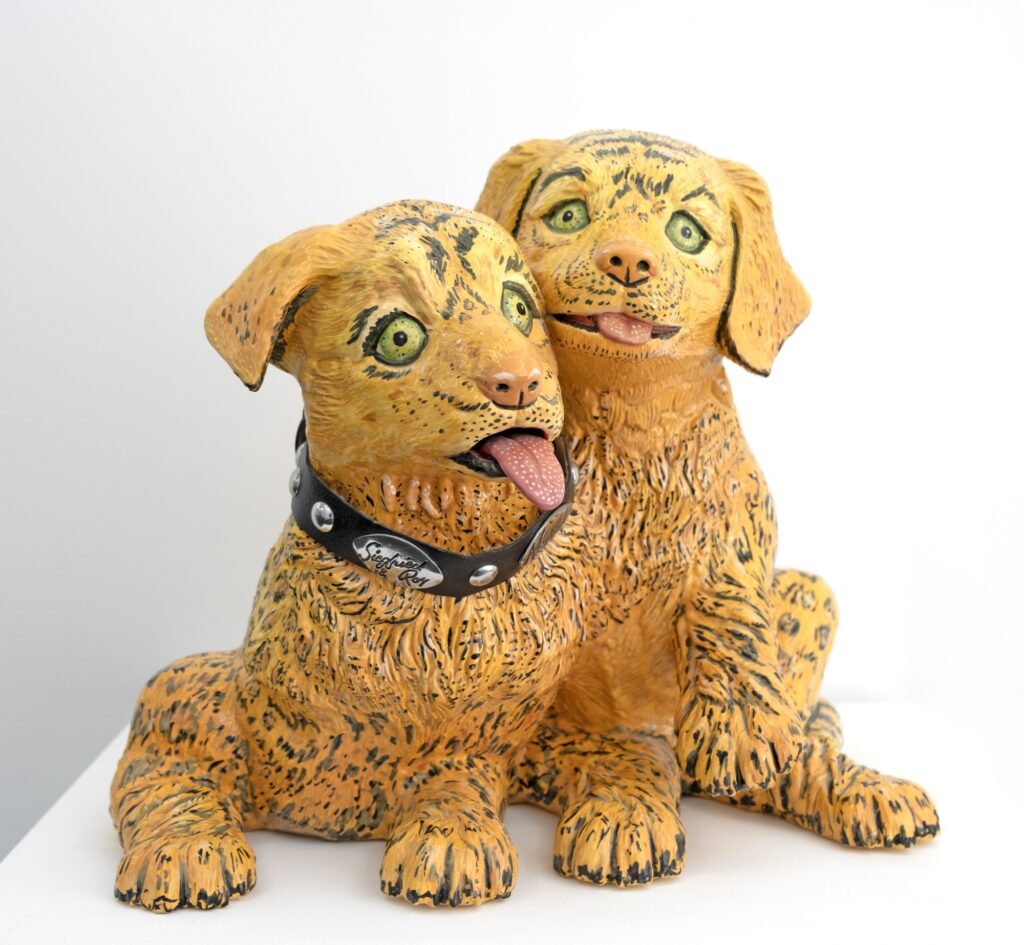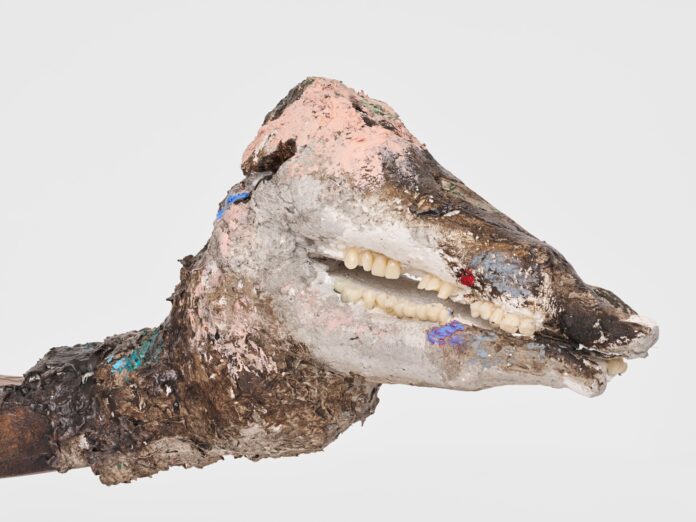Rebecca Camacho Presents has, most refreshingly, used the summer season to stage two thematically curated shows, both of which have commendably showcased artists beyond the gallery’s normal roster. For the second show, “Beasties” (July 20—August 24), Nick Makanna has curated a selection of paintings, sculptures, and ceramics by artists who depict imaginatively weird, wicked, and affable creatures. Among the many engaging works, Nickola Pottinger, Maija Peeples-Bright, and John de Fazio present sculptures and ceramics that explore interspecies hybridity or cloning. With a striking range of aesthetic approaches, from roughly rendered and ominous to meticulous crafted and kitschy, animals in these works operate as proxies to speak about the mystical, the carnivalesque, and innuendo.

With a haunting presence, New York-based artist Pottinger presents “Duppy x Redhills” (2023), a hybrid pig-human-like creature that draws upon her family’s Jamaican beliefs in the afterlife and reincarnation. With animal bones for the pig’s ears and human teeth lining the mouth and subtly present on the chest and bottom of the torso, the lumpy paper-pulp sculpture suggests a mythical interspecies being. Pottinger’s materials—bones and teeth in particular—and the dingy, almost desiccated surface, conjures visceral associations of death and decay. Additionally, the small felt doll hanging from the bottom of the torso, akin to a Voodou doll, draws attention to a face on the form’s chest, where pyrite (“fool’s gold”) eyes and gold leafed ears suggest an alchemical or spiritual magic. Most powerfully, Pottinger’s operates in a space betwixt and between species, life/death, talisman and sculpture.

Moving to a more absurd and humorous exploration of animal hybridity, Bay Area Funk artist Peeples-Bright presents a ceramic sculpture “Equine Ox” (2005). While two-headed creature might read as an ox-horse chimera, it also holds almost ribald suggestions, an ox donning a horse costume on its rear-end. The ox-horse creature evokes many playful questions about the advantages of crossing a horse with an ox, why an ox might masquerade as a horse, or the advantage of having two heads in lieu of hind legs or a buttock. Adding to the work’s carnivalesque suggestions, a cluster of shiny glazed orange dogs, one of which is wearing a pair of glasses, cling to the horse’s neck like energetic flames. Festively, Peeples-Bright conjures the awe and humor of the circus or theater (and also in a cosmic linguistic play on words) where we suspend belief and imagine fantastical creatures.

On the end of more meticulous craftmanship, Bay Area artist de Fazio, presents “CLONED DOG (Siegfreid and Roy)” (2008). In de Fazio’s kitschy slip-cast conjoined tiger cubs, the artist has fastidiously glazed the tiger stripes, emerald green eyes, and wagging tongues. All of this cuteness is topped off with a studded dog collar stamped “Nevada,” home of legendary Siegfreid and Roy’s Las Vegas exotic animal shows. With slight of hand, de Fazio uses the tiger’s cuteness and his craftsmanship to present on surface a pair of adorable tiger cubs. While on the other hand, the work alludes to Sigfreid and Roy, who in life and on stage harnessed illusion and spectacle while negotiating queer identities.
Within these works, animals become intriguing proxies for spirits, absurdist and possibly lewd humor, and relationships and innuendo. Through animal hybridity, the artists transgress interspecies and same species borders, or the unspoken, but understood. As the artists seize ambiguity to open the interpretive lens beyond taxonomies and realities, their use of symbolism, humor, masquerade, and illusion invite viewers to do a double take.
BEASTIES through August 24 at Rebecca Camacho Presents, 794 Sutter Street, SF. 415-800-7228. More info here.




